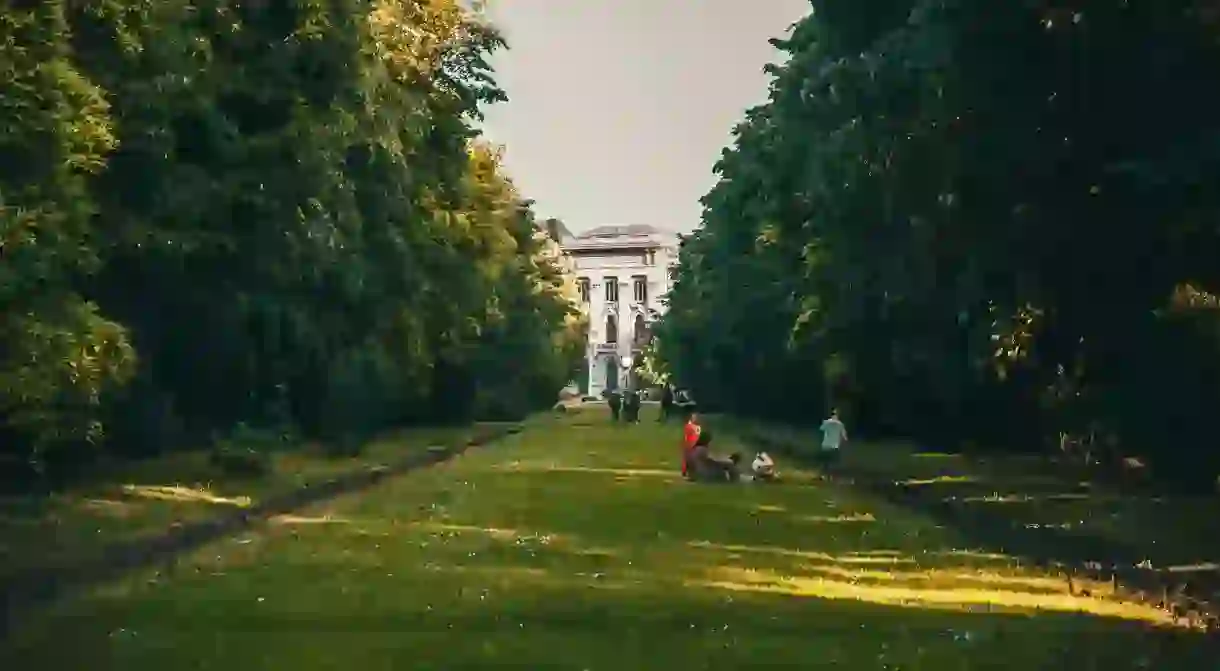28 Amazing Things to Do and See in Bucharest, Romania

Everyone has a relatively good idea of what to expect when visiting Paris, London, Berlin, Prague or Budapest. But what to make of Bucharest, one of the biggest cities in Europe and an up-and-coming destination for years? Here’s our guide on how to make the best of Bucharest to get you started.
See stunning architecture
Architectural Landmark

Uncover unique museums
Museum
Explore quirky neighbourhoods
Architectural Landmark
Discover charming bookstores
Bookstore, Library

Spot original street art
Architectural Landmark
Bucharest has a lot of old buildings whose walls and roofs are starting to be covered in some very creative ways. In one of the latest projects, developed by Make a Point, a group of local creatives has hit a major mark by covering the rooftops of several blocks of flats with murals inspired by the identity of their neighbourhood, Pantelimon.
Visit churches and monasteries
Monastery
Relax in the park
Park

There’s no better way to escape the crowds than head to one of Bucharest’s parks and gardens. If looking for a carefully designed green oasis in the heart of the city, visit Grădina Cişmigiu, the oldest and most popular public garden. For wide lawns and long walking lanes head to Herăstrău Park or Tineretului Park, and for a wildlife-watching experience go to Parcului Natural Văcăreşti. The Botanical Gardens, some of the best in the country, will introduce you to the varied local flora.
Taste great food
Cafe, Contemporary, Vegetarian, Vegan, Healthy
A visit to Bucharest can act as the best introduction to Romanian cuisine. Try local staple dishes such as sarmale, mititei and papanași, while not forgetting that the Romanian capital is a great spot to revisit world cuisine at its many cafés and restaurants.
Shop at the market
Market

Buy local design
Shop
Traditional Romanian souvenirs are a great way to bring a piece of the local culture to your home. But while in Bucharest, take time to browse through shops and galleries looking for objects, clothes and accessories by local designers and you might stumble upon some treasures.
Watch a Romanian movie
Cinema
Enjoy the vibrant nightlife
Architectural Landmark
One of the undisputed party capitals in Europe, Bucharest’s nightlife has something for everyone. Start off with a cocktail in one of the hip bars in Palatul Universul or at the many pubs in the old centre before heading to Control or Expirat for a cool, alternative crowd, or Fratelli for an unforgettable glamorous extravaganza.
Go to the beach
Spa
While perhaps a surprising suggestion at first sight, going to the beach – a real yellow sandy one with palm trees even – is perfectly possible. In the summer, head to Sands of Therme, the biggest urban beach in Europe, and in the cold months you can head the same way, since the covered thermal water pools at Therme are open year-round.
George Enescu Museum
Museum
A picturesque Art Nouveau building, the George Enescu Museum immediately catches the eye of the passers-by with its richly adorned façade and oyster-shaped glass entrance. It features beautiful ceiling frescoes depicting cherubs holding musical instruments and elegant antique furniture, as well as personal objects pertaining to composer George Enescu.
Palace of the Parliament
Building

Bellu Cemetery
Cemetery
Romanian Atheneum
Building
Primăverii Palace
Museum
Caru' cu bere
Architectural Landmark
Both the gothic revival exterior and the art nouveau interior of Caru’ cu Bere, one of Bucharest’s most famous restaurants, are equally striking. Located in the Old Centre on Stavropoleos Street, the building was designed by Austrian architect Siegfrid Kofczinsky and became the home of Bucharest’s oldest beer house in 1899. This is perhaps the best place to start your initiation into the Romanian cuisine, so dive right in with a plate of sarmale or mititei, or start slowly, with a soup. Whatever you choose, do not forget to make a reservation, as the place is popular with tourists and locals alike.
Cotroceni Palace
Building
Great Synagogue
Architectural Landmark
Built in 1847 by the Polish community of Bucharest, the Great Synagogue is one of the few surviving such monuments in the capital. The highlight of the richly decorated interior are the 1936 paintings by Gershon Horowitz and the majestic chandelier. Since 1992, the synagogue hosts the Holocaust memorial, which features a permanent exhibition.
Museum of the Romanian Peasant
Museum
The museum owns the biggest and most valuable collection of folk costumes in the country, as well as traditional ceramics, carpets and rugs, and household objects, totaling almost 100,000 items. The museum’s café sells traditional Romanian food and beverages and the fairs the museum holds regularly attract the city’s hippest crowd, as do the art house cinema screenings and concerts.
Snagov Monastery
Monastery
National Museum of Romanian History
Museum
Arcul de Triumf
Architectural Landmark

Nothing evokes Paris better than a replica of its famous Arc de Triomphe. Built to celebrate Romania’s victories in World War I, the Triumphal Arch is 27 meters (89 feet) tall and covered in Romanian marble and bas-reliefs by famed sculptors.
Calea Victoriei
Architectural Landmark
One of the city’s main arteries, Calea Victoriei is dotted with beautifully restored buildings, museums and memorial houses that recall the avenues of Paris.
Grand Hotel Continental
Hotel
Opened in the 19th century, the Grand Hotel Continental replaced an older establishment which hosted a French restaurant as well as a hat shop by the renowned French brand Jobin, which gave way to the Romanian version of top hat, still in use today.
Central University Library of Bucharest
Library
Designed by French architect Paul Gottereau, this library was opened at the end of the 19th century. Damaged by bullets during the 1989 revolution that toppled the Communist regime, the building was later restored to its former glory.













